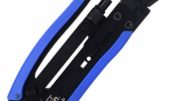You’ve seen them there just taunting you. Those “flex ports” on your multiswitch. They’re just there empty while the other input lines happily supply your home with satellite service. So what are they there for?

This is the DIRECTV WorldDirect international dish. If English is your only language, you might not have ever seen it before. It’s used for DIRECTV’s US customers who want non-English programming… and DIRECTV does a great job in serving non-English speakers with over 100 channels of programming in foreign languages. Most of that programming is on a satellite that the regular DIRECTV dish doesn’t get, so this dish is used for cases like that.
Even though it looks like an HD dish, the WorldDirect dish just has two lines out. One is used for the 101 satellite that carries regular DIRECTV programs and the other is used for the 95 satellite that carries that other international programming. There’s also another satellite location at 72.5 which carries still more programming, and for that you need yet another dish.
Now here’s where it gets tricky, and here’s where the flex ports come in. If you want to get regular DIRECTV programming PLUS the stuff at 95 or 72.5, you need to put all those lines into a multiswitch. The flex ports allow you to connect a line from your international dish while also connecting the lines from the regular DIRECTV dish. All your receivers will get all the programming they need over a single wire!
The most common installation has you connecting a Slimline dish into the regular ports and then adding one line from the WorldDirect dish into Flex port 1. (You don’t need to use both lines from the dish.) If a third dish is used, connect that into Flex port 2.
So… you may never need those flex ports, but isn’t it good to know that if your long-lost cousin from South Korea comes visiting, you can get programming for him and not lose your regular channels?




